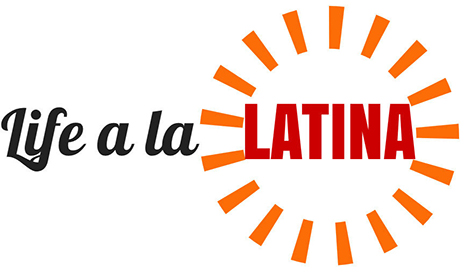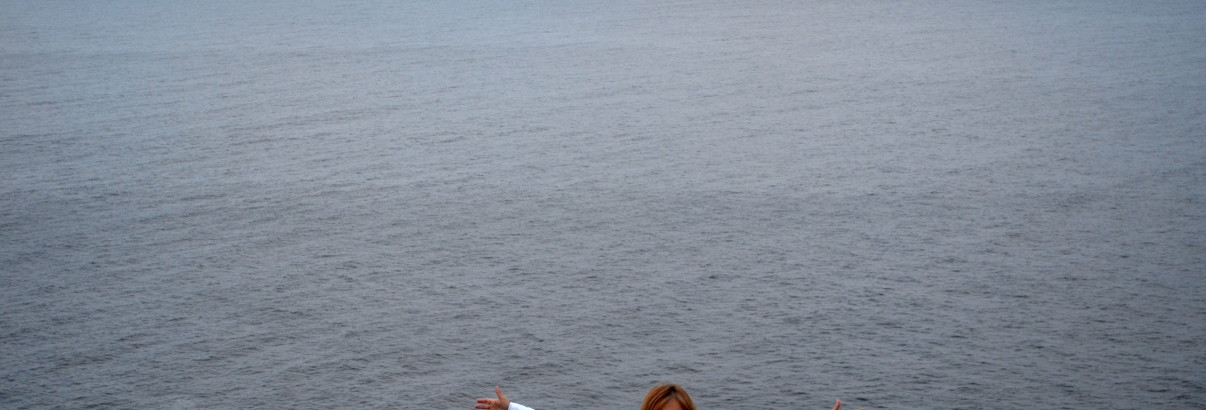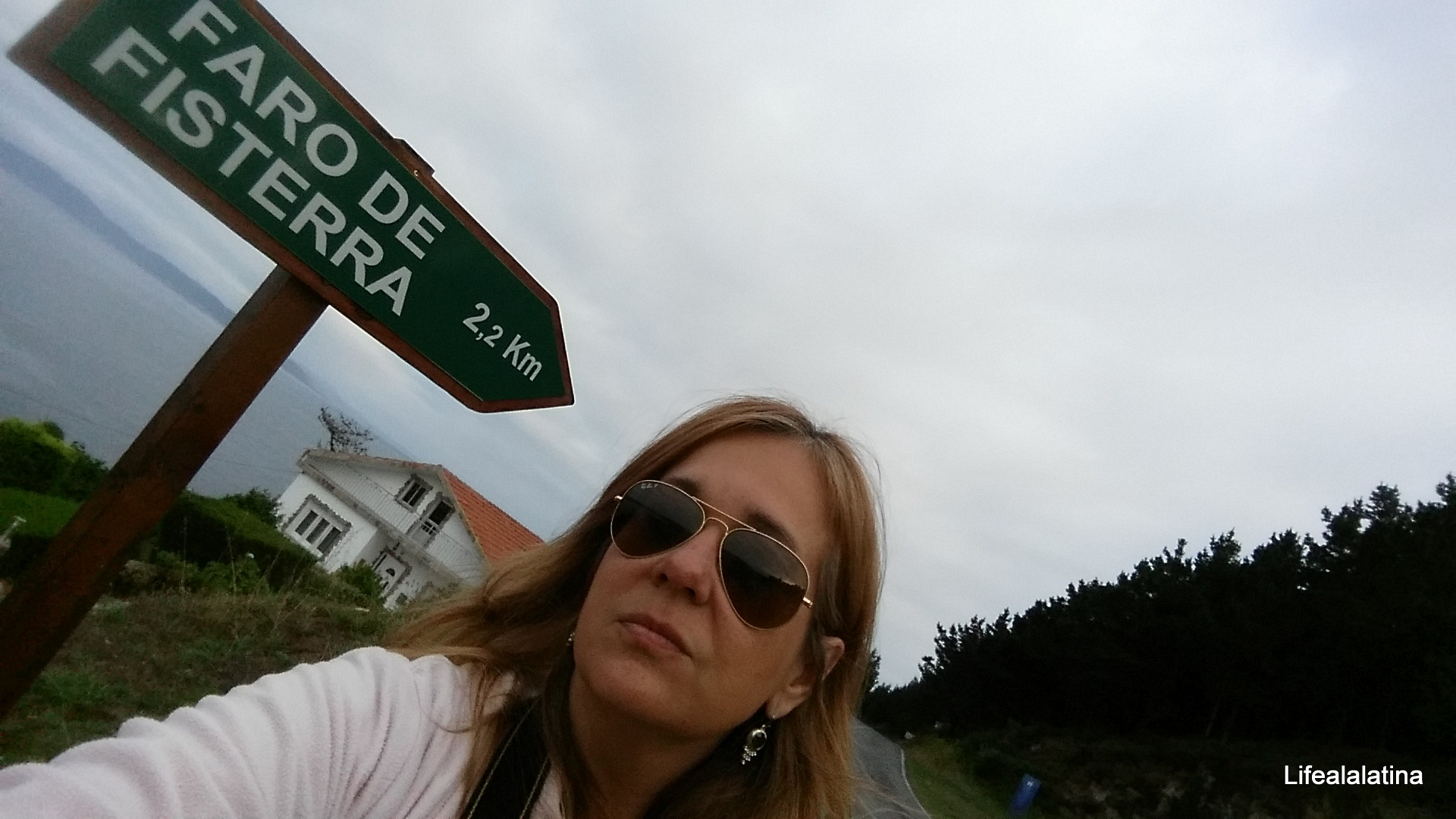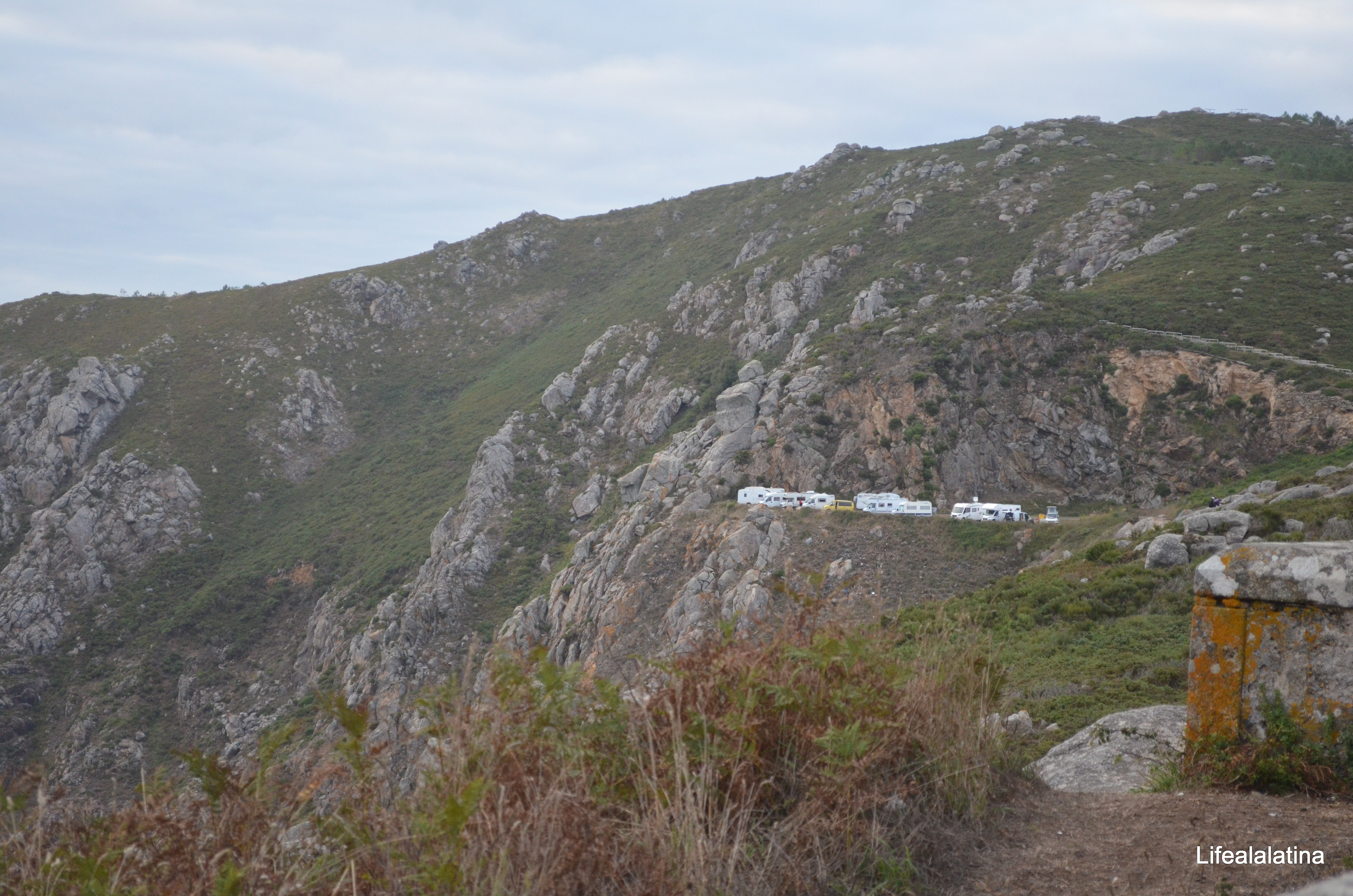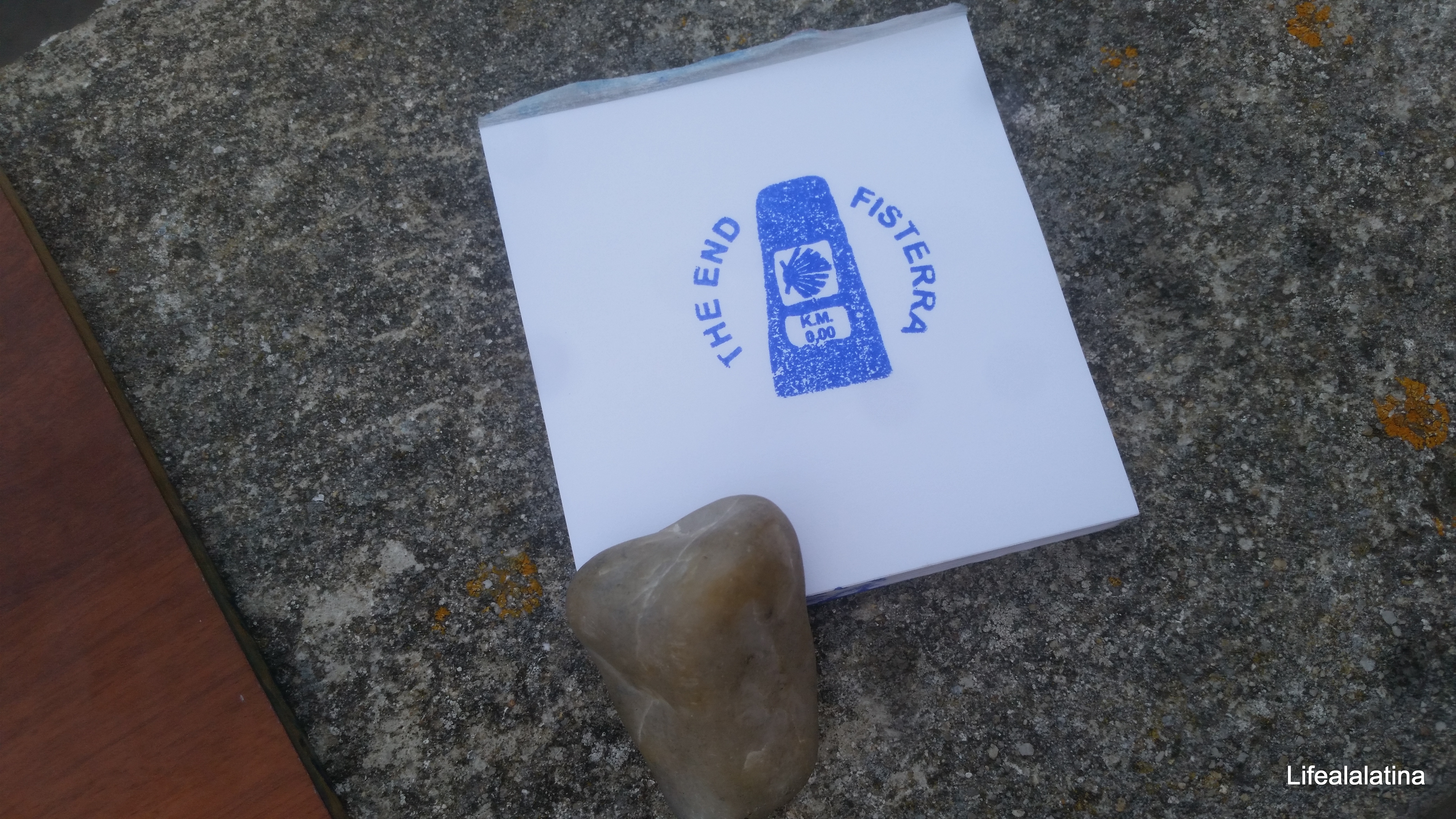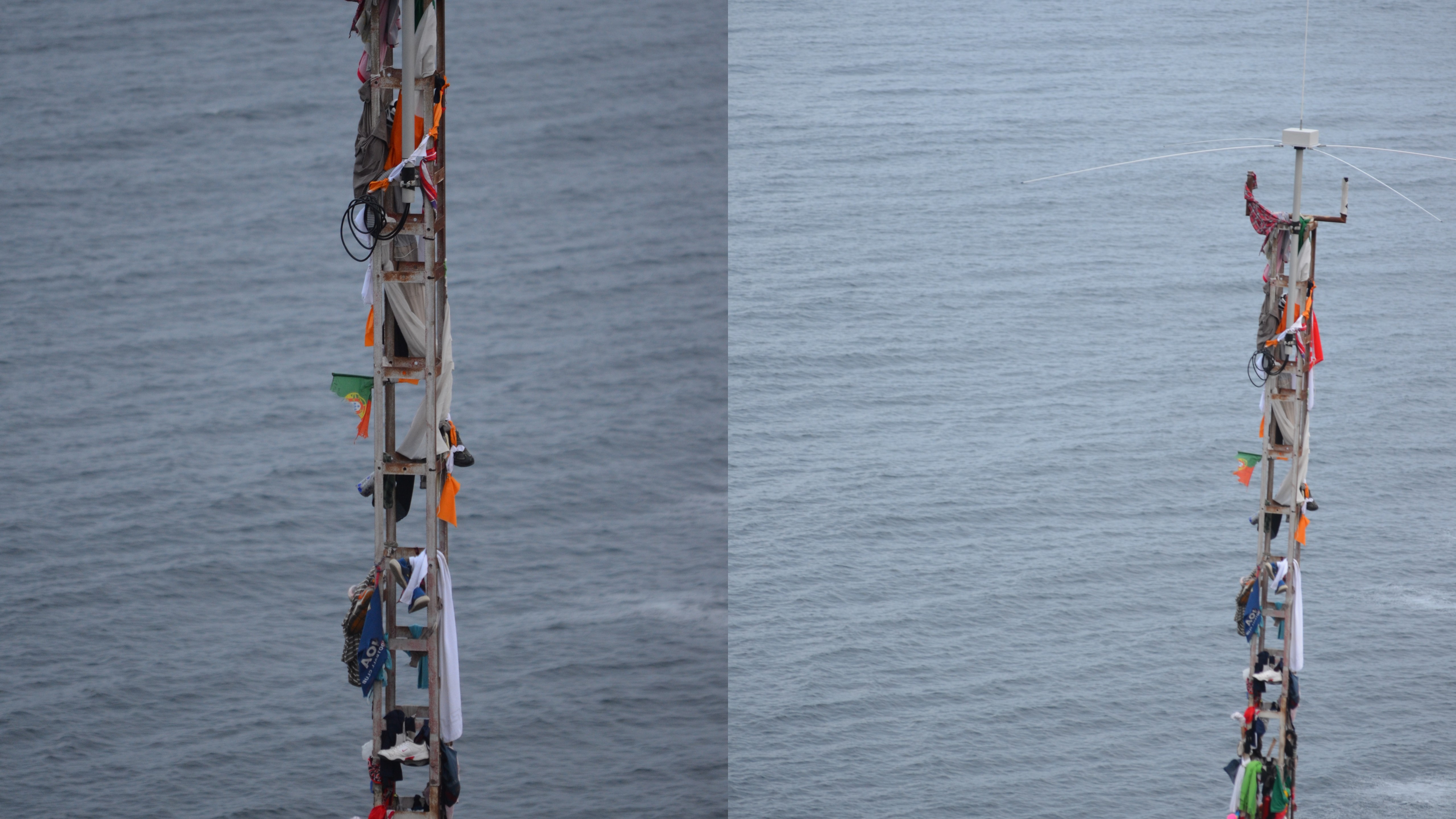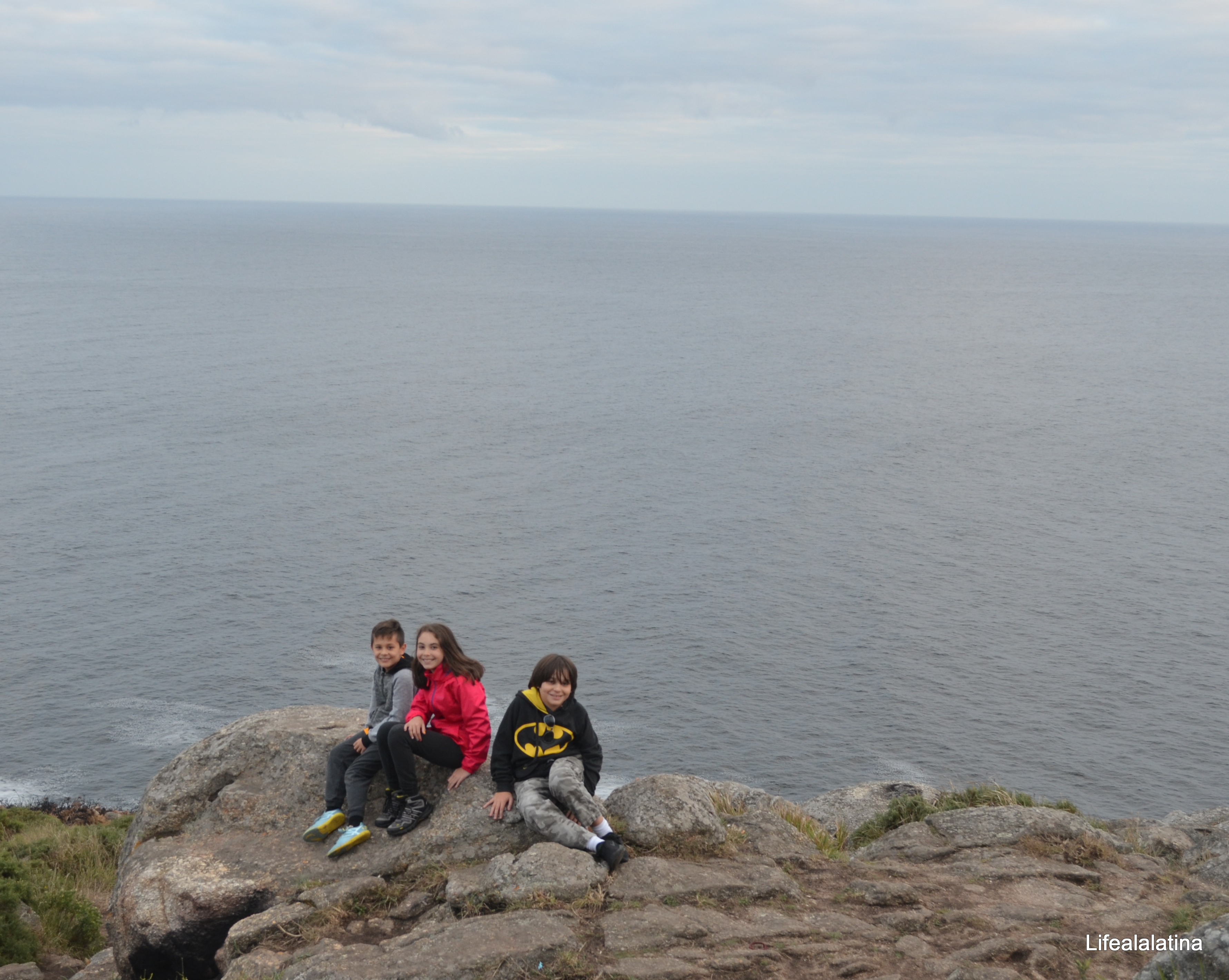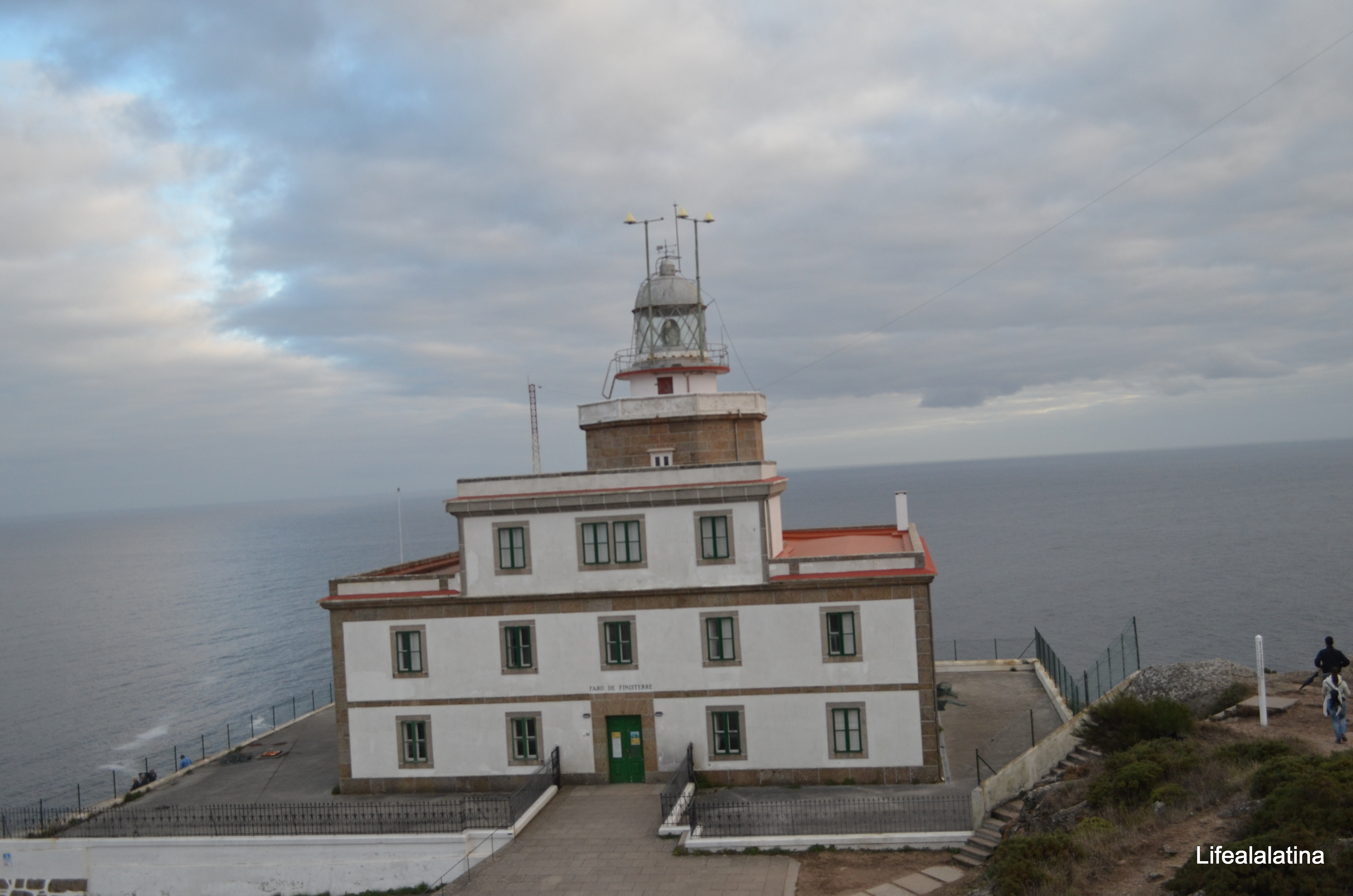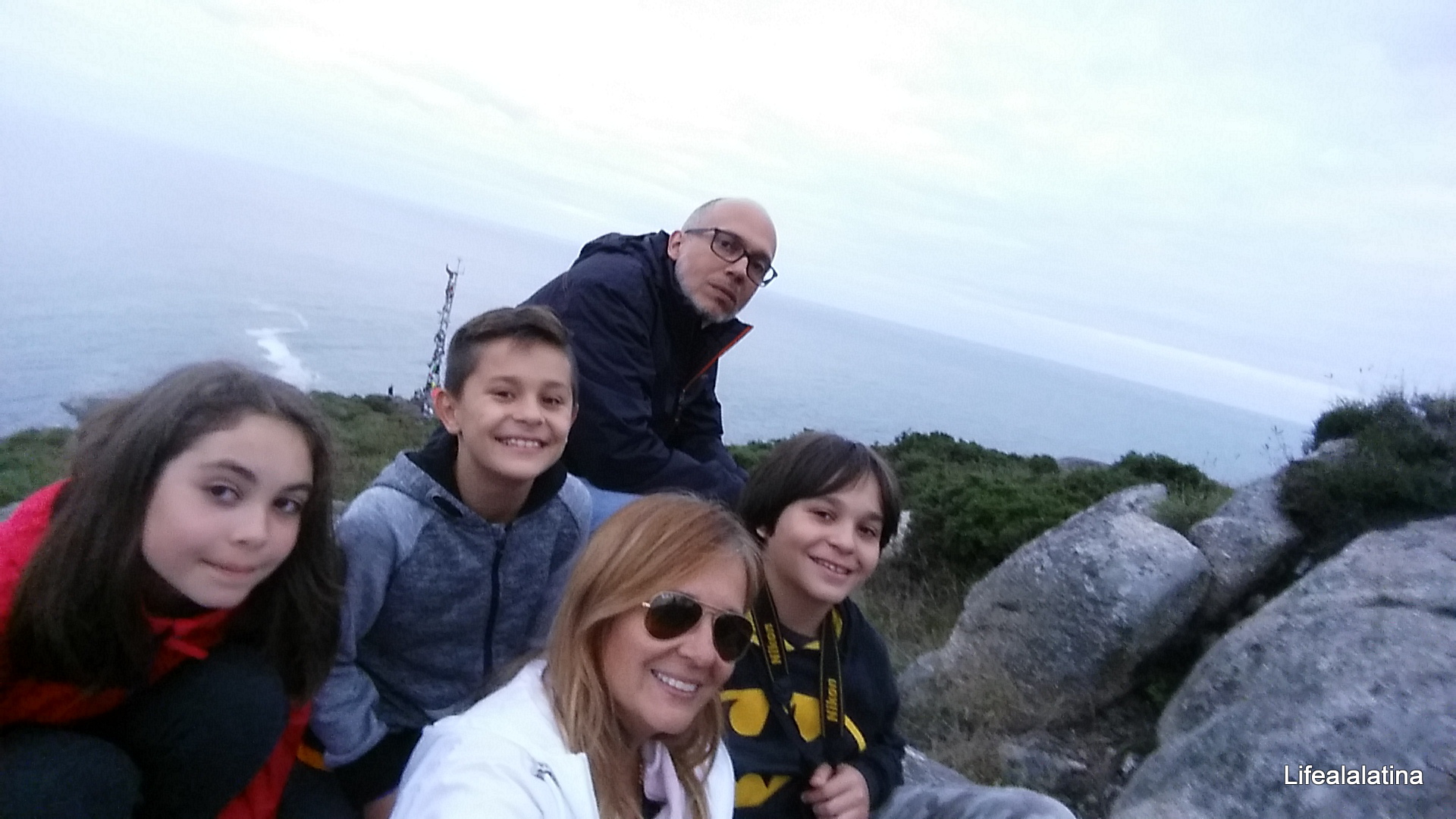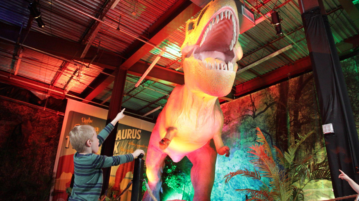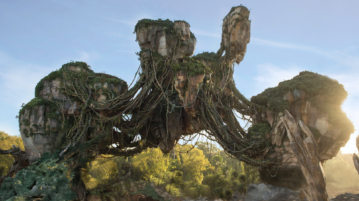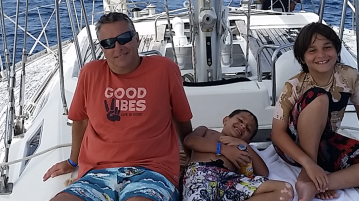Finesterre. Fisterre. Fin de la tierra. End of the world. Imagine a time when the world was thought to be flat. Imagine a time even centuries before that, when first Phoenicians and then Celtics prayed for fertility and longevity. Imagine sunsets so spectacular on the open Atlantic Ocean that the Romans thought they had found the place where the Sun died every night. Finis Terrae, el fin del mundo.
Mis hijos y yo pasamos un mes en Europa este verano. En su mayoría en Galicia, la tierra de mis ancestros paternos y ahora de mi hermano y su familia. Muchos otros tíos, primos. Tierra de recuerdos y de amores. En uno de nuestros paseos terminamos en un pueblo llamado Fisterre. Allí se creía, desde la época de los romanos, que se acababa el mundo. Es la parte más occidental y probablemente la más traicionera de la llamada Costa da Morte, Costa de la muerte.
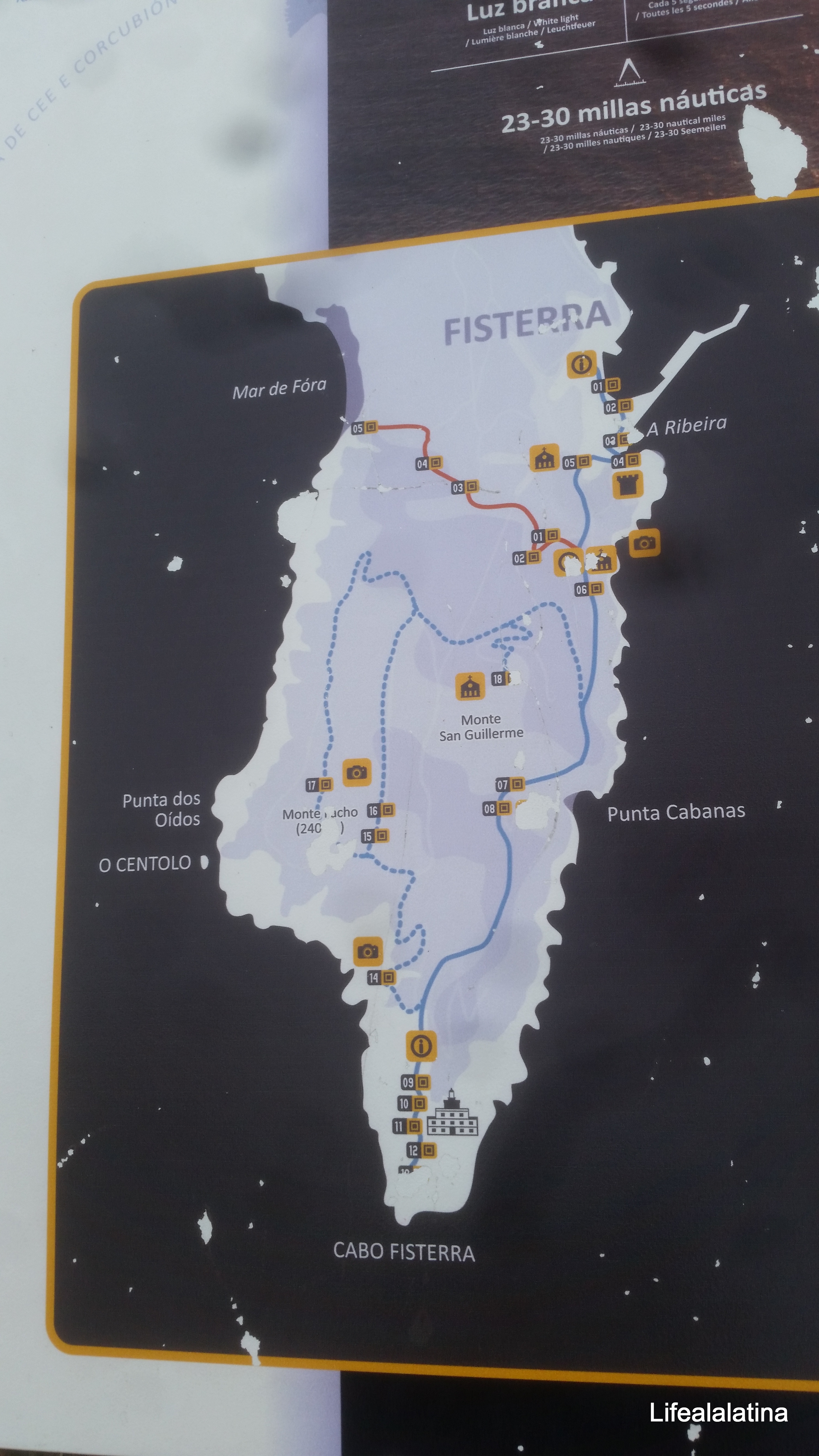 This Summer, my kids and I spent almost a month in Europe. Most of it in Galicia, the land of my paternal ancestors. My brother, who lives in A Coruña with his wife and daughters, took us in several drives along and a Costa da Morte (the Coast of Death).
This Summer, my kids and I spent almost a month in Europe. Most of it in Galicia, the land of my paternal ancestors. My brother, who lives in A Coruña with his wife and daughters, took us in several drives along and a Costa da Morte (the Coast of Death).
Having lived near the Atlantic ocean and big rivers in New York and South Florida, we have seen our share of lighthouses and are fascinated by them. In our list of things to do was to see the iconic lighthouse in Fisterra.
Nothing could have prepared us for what we saw.
The Romans gave this area in the Spanish North-West the name of ‘Finis Terrae’, meaning Land’s End or The End of the World. They believed this point to be the most Western corner of their vast Empire. In fact, its geographical location and impressive sunsets led Decimus Junius Brutus (the Roman general who conquered Galicia) to believe that this was indeed the place where the Sun died at dusk.
Después de ver los atardeceres allí, el general romano que conquistó área Decimus Junius Brutus llegó a la conclusión de que había encontrado el lugar donde el sol iba a morir hasta el nuevo día.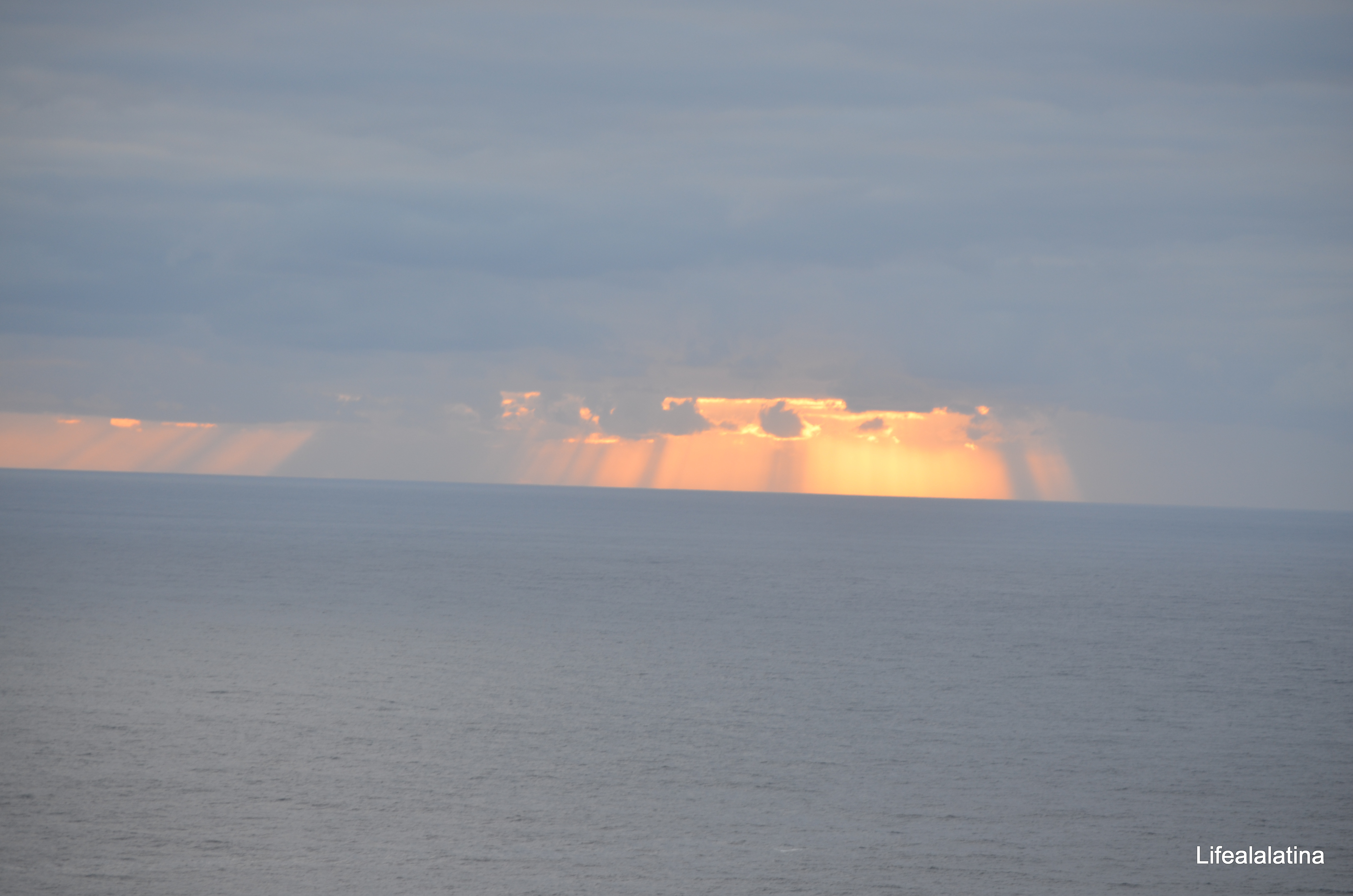
The area surrounding this headland has been considered a magical place since the earliest times, and legend has it that the Celtics set up an altar, the Ara Solis, at which they worshipped the Sun. Before that, it´s believed that the Phoenicians sailed from the area for their trade in the Bronze age.
Los romanos no fueron los primeros. Dice la leyenda que los celtas construyeron un altar allí para adorar al sol y que realizaban ceremonias para invocar la fertilidad. También que mucho antes, los fenicios navegaban desde allí en sus rutas de comercio en la Era de Bronce.
But the magic doesn´t end there.
Fisterre is also part of another more modern tale. It´s considered the real last stop in El Camino de Santiago, the pilgrimage known in English as St James Way.
Además, es el verdadero final del Camino de Santiago. El último tramo para reflexionar, después de haber ido a la Catedral de Santiago de Compostela.
There is the place were the pilgrims that have walked The Way should take their boots off and finally rest. There is a tradition of burning shoes, socks, flags, T-shirts or other pieces of clothing that the pilgrim has carried during the weeks on the road. At the end of El Camino de Santiago a new person emerges, maybe from the ashes created in Fisterra.
Los peregrinos que llegan suelen cumplir con la tradición de quemar algo de lo que llevaron consigo durante todo el camino. Ropa, zapatos, mantas, banderas….Es un ritual para llamar a la felicidad y demostrar que sí han dejado atrás el pasado y se han convertido en personas nuevas.
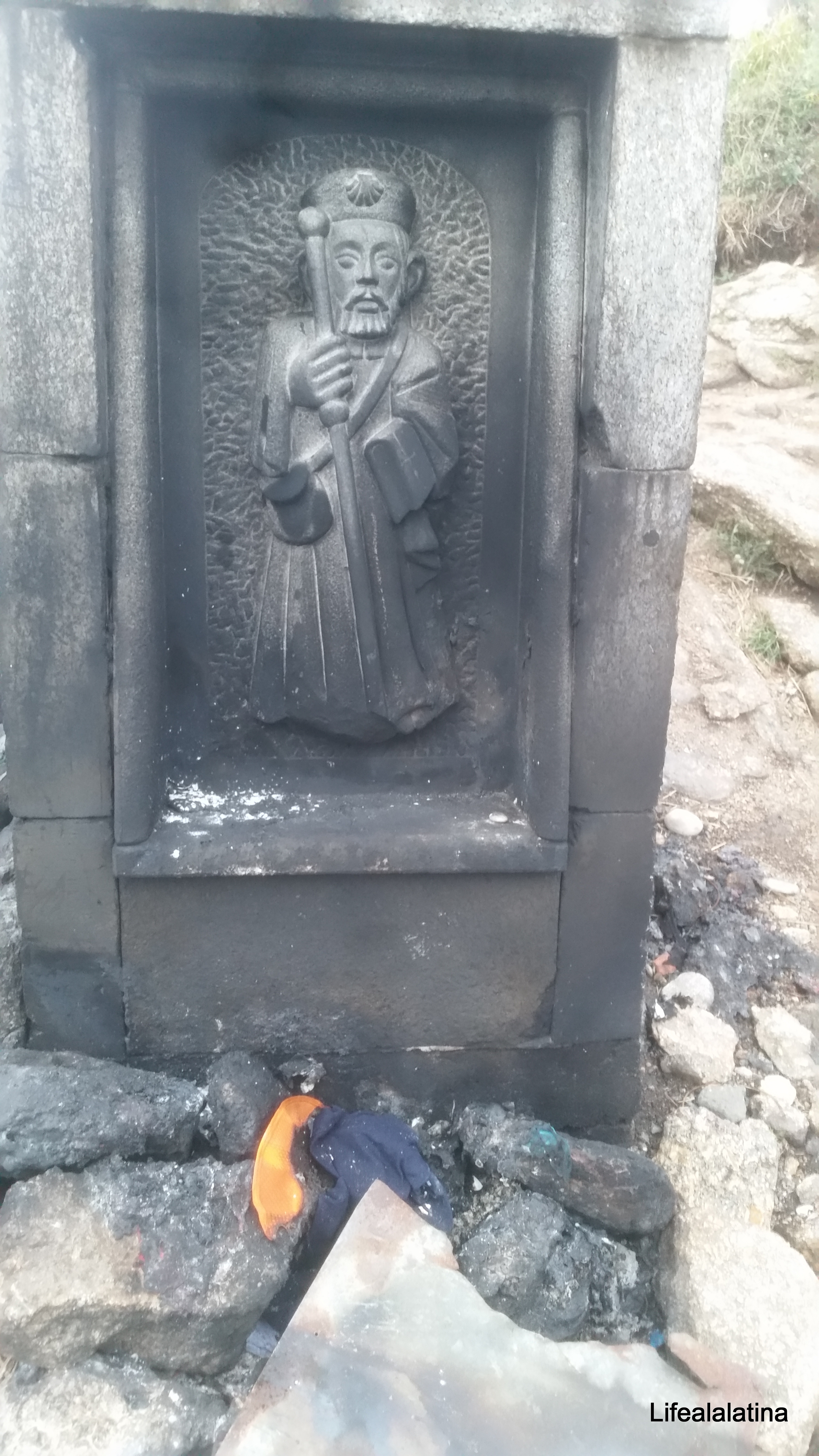 They burn their things at the feet of the image of Santiago Apostol. Some, in a last burst of energy, climb a pole and hang their jackets, flags or boots on it. We guessed the stuff doesn´t last long up there. The winds in the area were powerful. I can´t imagine what happens during one of the infamous storms in a Costa da Morte.
They burn their things at the feet of the image of Santiago Apostol. Some, in a last burst of energy, climb a pole and hang their jackets, flags or boots on it. We guessed the stuff doesn´t last long up there. The winds in the area were powerful. I can´t imagine what happens during one of the infamous storms in a Costa da Morte.
Los más aventureros, o que han logrado asirse a los últimos vestigios de energía, se suben a esta torre y cuelgan de allí lo que quieren dejar de recuerdo, pero dudo que dure mucho. Los vientos, aun sin una de las famosas tormentas de la Costa de la muerte son impresionantes.
When you stand there, looking at the Atlantic, with your feet in the place where humans wondered what was out there for centuries, you can feel nothing but minuscule. Even now, with Google Maps, satellites and the space station, it´s impossible not to thing about Christopher Columbus and his men. It sparked a great conversation with my boys and my niece. What did America´s first explorers feel when they were pointing their ships towards the vastness of the open ocean. It´s easy to feel the weight of history. I still can´t believe we made it there.
Estar allí frente al Atlántico te hace sentir minúsculo. Entiendes, aun en esta época de Google Maps y estaciones espaciales, cómo los antigüos llegaron a pensar que allí se terminaba el mundo. Con mis hijos y sobrina conversamos sobre lo que habría sentido Cristobal Colón y sus hombres para atreverse a apuntar sus barcos hacia ese océano.Se siente el peso de la historia. Aun no puedo creer que estuvimos allí.
And there is the lighthouse itself. Sitting at the top of Monte Facho, at 238 metres (781 ft) above sea level, el Faro de Fisterre is the most visited lighthouse in Europe, perhaps of the whole world. It was built in 1853 with the hope of reducing the shipwrecks in the area.
Y como coronando la imponente belleza natural está el Faro, el más visitado de Europa y probablemente del mundo. Se lanza a 238 metros sobre el nivel del mar e ilumina hasta 23 millas náuticas. Además tiene una sirena que suena como un bramido, por lo que se le conoce como “La vaca de Fisterra”.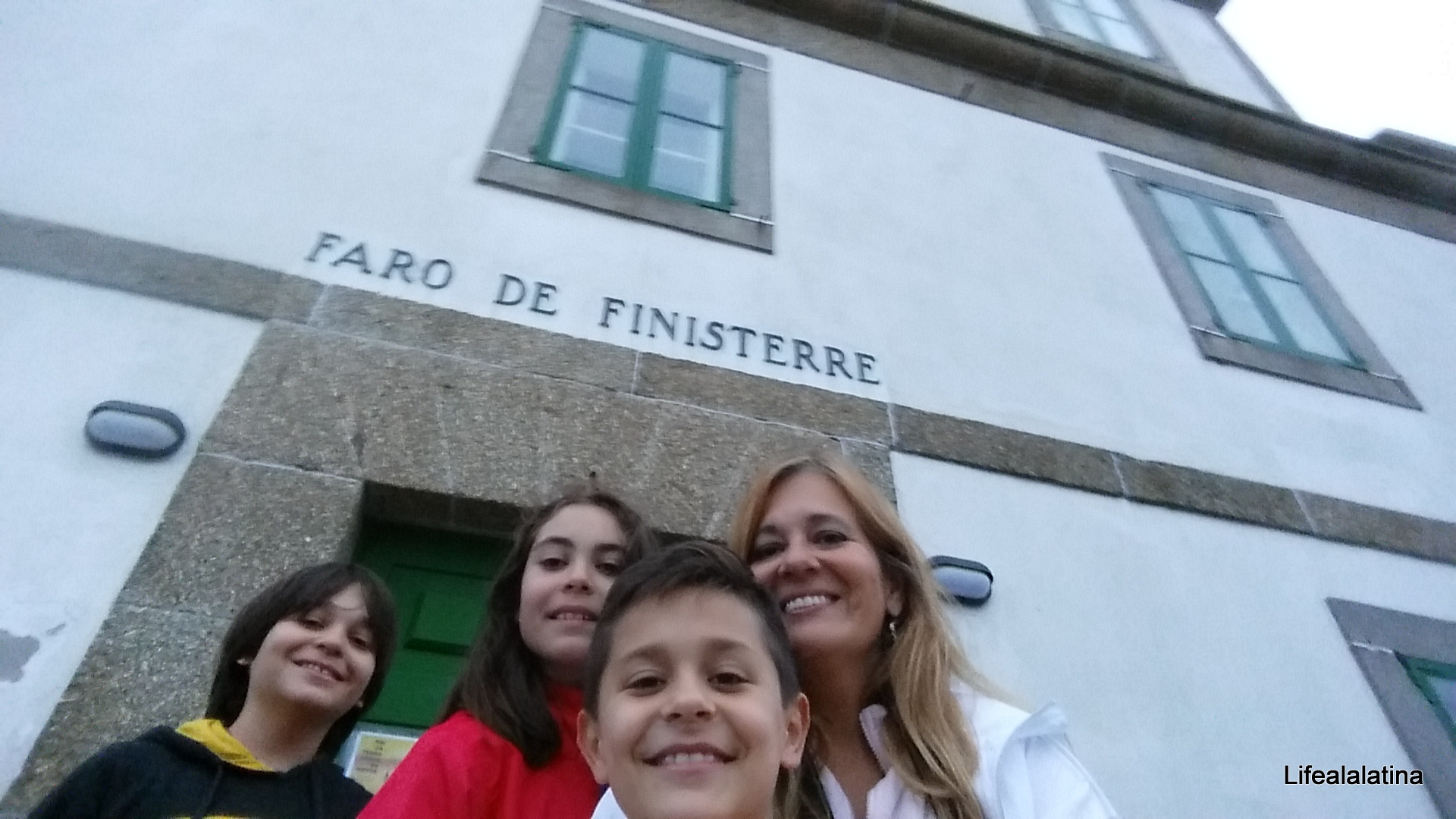
It was mid August. Cold and windy. Such can be the Summer weather in a Costa da Morte. But don´t let that scare you. If you have the chance go and visit Finisterre. Fisterre. The End of The World. It will become a watershed place in your life, with a before and an after. You will think about history, legends, love and science and about this wonderful planed we call home. And if you have children,trust me, they won´t ever forget it either.
Era mediados de agosto. Supuestamente pleno verano, pero como suele pasar en la Costa de la muerte, hacía frío y viento, pero no dejes que eso te asuste. Si tienes la oportunidad de ir a Fisterre no lo pienses dos veces. No volverás a ser la misma persona. Queriendo o sin querer pensarás en el significado de la vida, la historia, leyendas, amor y hasta ciencia, y en la belleza de este hermoso planeta que tenemos como hogar. Si vas con niños, créeme, creaste con ellos un recuerdo indeleble.
